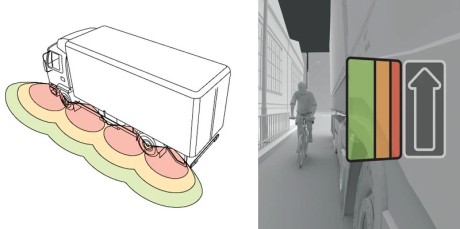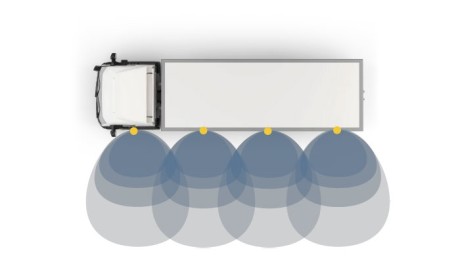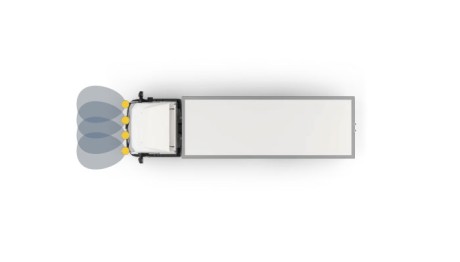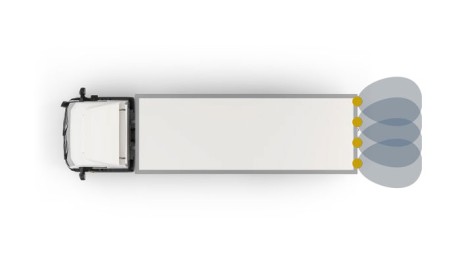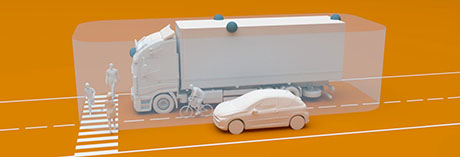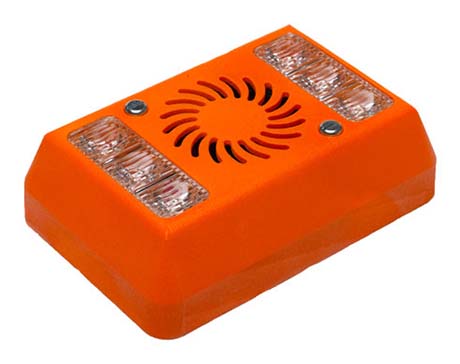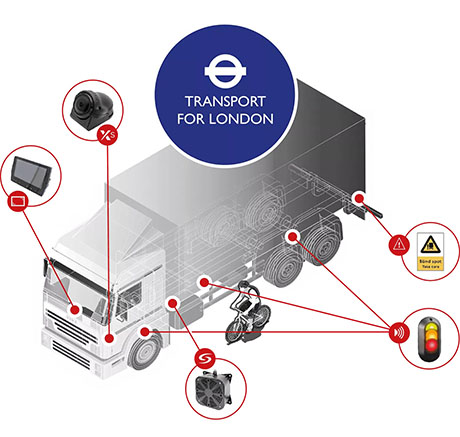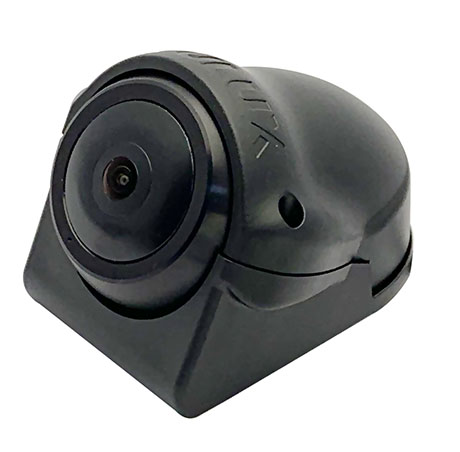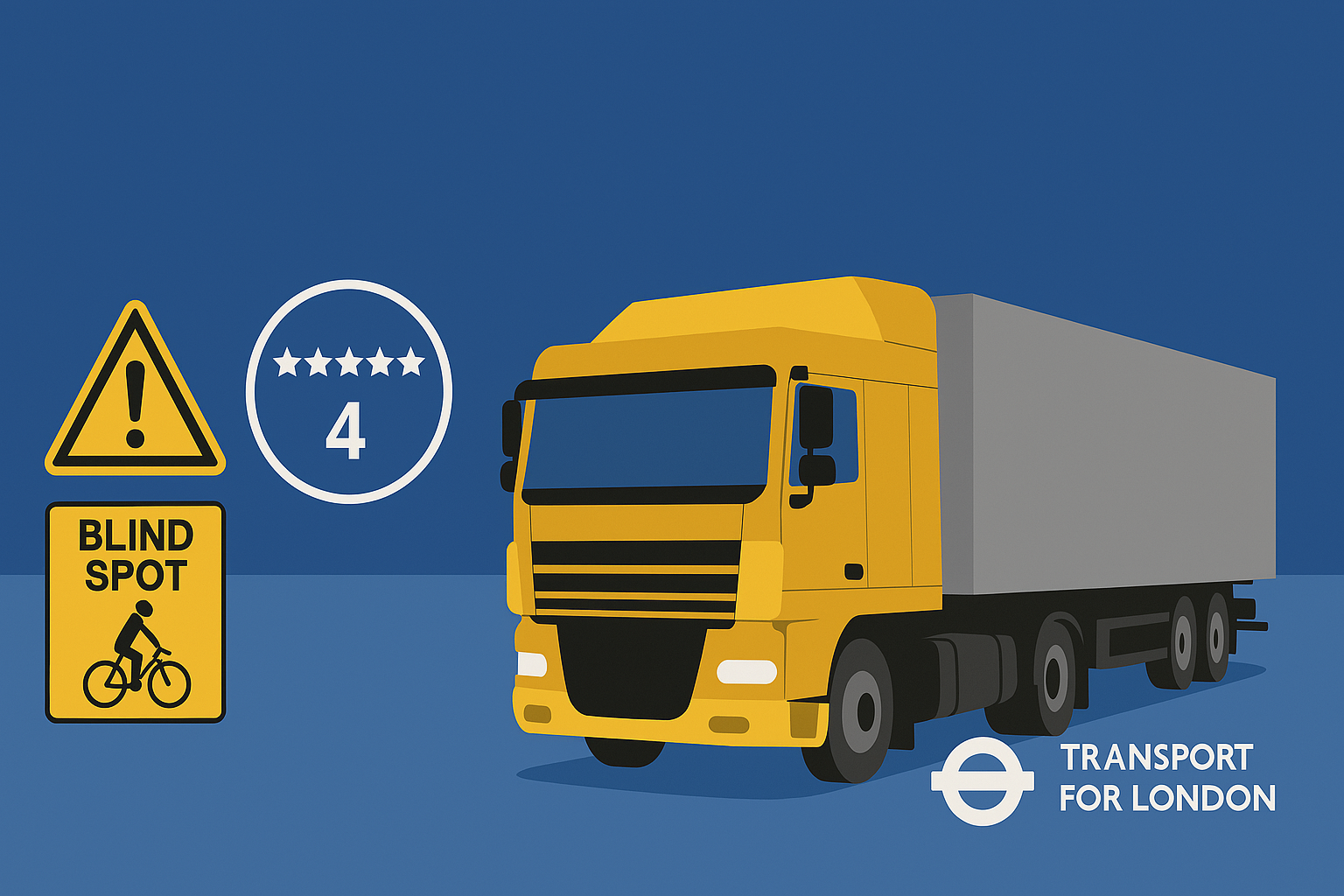
FAQ | Understanding the UK Direct Vision Standard (DVS)
faqs -> direct-vision-standards
If you operate HGVs in Greater London, the Direct Vision Standard (DVS) is something you can’t afford to ignore. Introduced by Transport for London (TfL) as part of their Vision Zero safety initiative, the DVS is designed to reduce collisions between large vehicles and vulnerable road users — mainly pedestrians, cyclists, and motorcyclists.
But what exactly is the DVS? How does it work? And what kit do you actually need to stay compliant?
What is DVS?
The Direct Vision Standard assesses how much a driver can see directly through the cab windows — not via mirrors or cameras, but with their own eyes. Each vehicle over 12 tonnes gross vehicle weight is given a star rating from 0 to 5 based on how much direct vision the driver has at ground level.
- 0 stars = Poor visibility, high risk.
- 5 stars = Excellent direct vision, low risk.
What are the current rules?
As of 28 October 2024, all HGVs over 12 tonnes operating in Greater London must have a minimum three-star DVS rating or be fitted with a compliant Progressive Safe System (PSS). This follows the earlier requirement introduced in 2021 for a minimum one-star rating or a basic Safe System.
Operators who applied for a safety permit before the deadline and were granted a grace period have until 27 May 2025 to get their vehicles fully upgraded to the new standard.
What was the Safe System?
The original Safe System was a set of retrofitted safety features for vehicles with 0-star ratings. These measures helped improve indirect vision and warned other road users of the vehicle's movements.
Key features of the original Safe System (2021):
- Class V and VI mirrors – For better visibility around the front and nearside.
- Blind spot camera system – Covers the nearside and front blind spots, viewable on an in-cab monitor.
- Nearside proximity sensors – Detect cyclists and pedestrians and alert the driver.
- Audible left-turn warning – “This vehicle is turning left” speaker, especially helpful in urban settings.
- Blind spot signage – Clear stickers to warn vulnerable road users.
- Side under-run protection – Guards fitted between wheels to stop people being dragged under the vehicle.
What is the Progressive Safe System?
The Progressive Safe System (PSS) builds on the original Safe System with higher standards, better-performing technology, and tighter specifications. It's mandatory for all vehicles rated below three stars, unless covered by the grace period.
Key upgrades in the Progressive Safe System (2024):
- Enhanced nearside sensors: Must detect both moving and stationary vulnerable road users and reduce false alerts from street furniture.
- Upgraded camera systems: Must provide full nearside coverage with clear display on a dedicated in-cab monitor.
- Audible alerts: Must function in both light and dark conditions, and only activate when turning left.
- Improved warning signage: Clearer wording, appropriate placement, and standardised size.
- Driver monitoring systems: Must display camera feeds and sensor alerts clearly without distracting the driver.
What equipment is actually needed?
To meet the Progressive Safe System requirements, operators may need to fit or upgrade the following:
| Equipment Type | Description |
|---|---|
| Camera monitoring system | Nearside and front blind spot cameras with in-cab monitor |
| Ultrasonic proximity sensors | Usually 4–6 sensors along the nearside to detect cyclists/pedestrians |
| Audible left-turn alarm | External speaker, must meet volume and clarity standards |
| Class V and VI mirrors | Wide-angle front and kerb mirrors (unless already installed) |
| Warning stickers/signage | “Blind spot – Take care” or similar, clearly visible on vehicle body |
| Side under-run guards | Steel or composite rails between wheels on both sides |
| DVR or recording unit (optional) | Not mandatory, but often included to support liability claims |
Does DVS apply to articulated trailers?
No — the Direct Vision Standard only applies to the tractor unit of an articulated vehicle, not the trailer. The DVS assessment is based entirely on what the driver can see from the cab at ground level, so the trailer plays no part in the star rating.
That said, it’s still common for trailers to be fitted with side under-run protection, blind spot signage, or even additional sensors or lighting as part of a company’s wider road safety strategy — but these are not currently required for DVS compliance.
How to check your vehicle’s DVS rating
TfL offers a free online tool to check your star rating. All you need is your Vehicle Registration Mark (VRM). If your vehicle doesn't meet the minimum rating, you'll need to apply for a permit with evidence of a compliant Progressive Safe System.
What happens if you don't comply?
Operating a non-compliant HGV in Greater London without a valid safety permit can result in a £550 Penalty Charge Notice per breach. Enforcement is active 24/7 via ANPR and roadside checks.
Summary
DVS isn’t just about ticking boxes. It’s a genuine push to make busy urban roads safer for everyone. For operators, it may have been a bit of hassle in the short term — but the long-term benefits include fewer collisions, reduced liability, and greater public trust in your fleet.
The Progressive Safe System is now in full force. If you haven’t yet upgraded your vehicles or you're operating under the grace period, this is your last chance to get everything in order and avoid disruption to your operations.
We’d love to hear from you – get in touch today!
